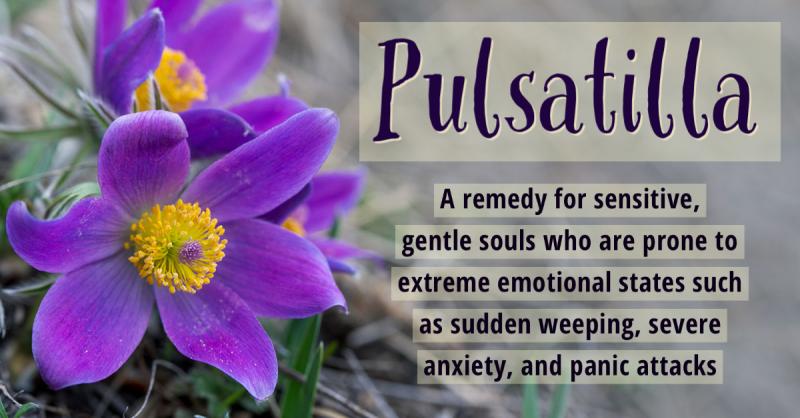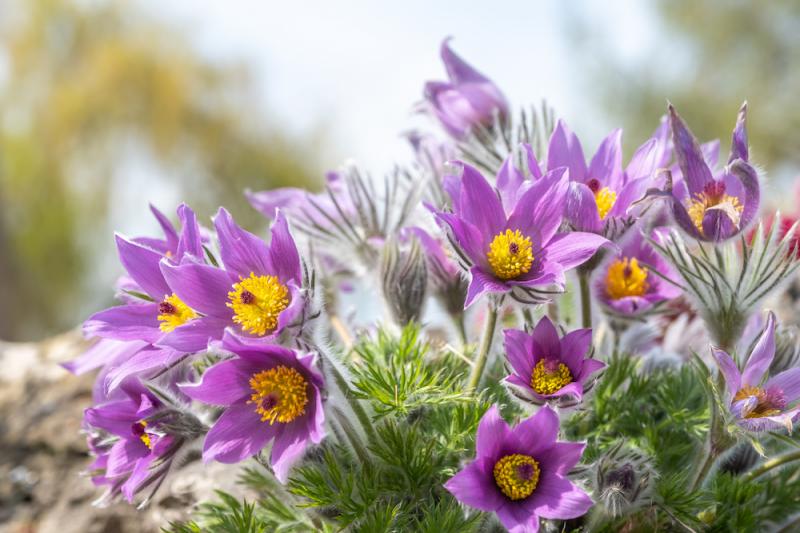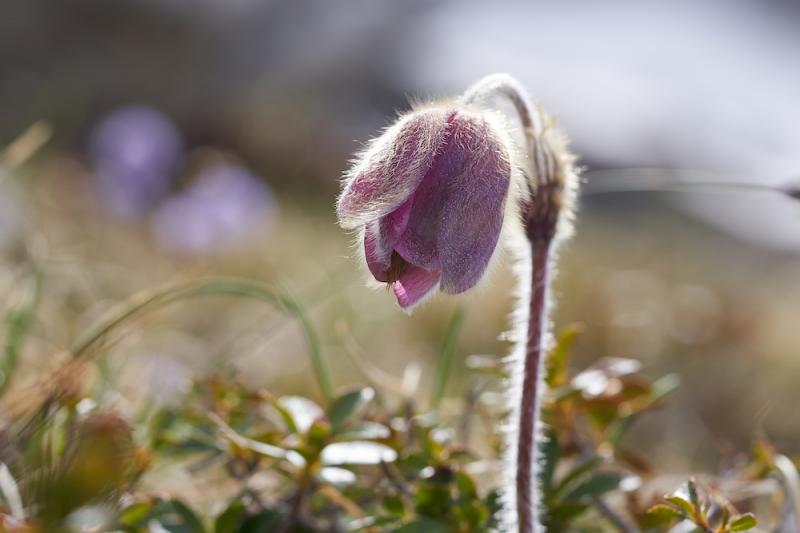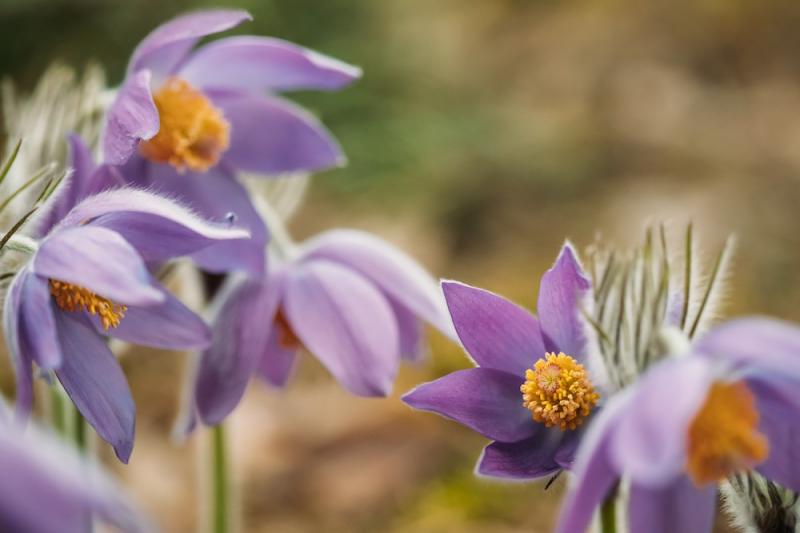
Cedar Breaks is a steep thirty-minute drive from where I live and offers stunning views of valley below, but very close by, rising above those heights is Brian Head Peak, at an elevation of 11,312 feet. It is flat, open and wind-swept with vistas spanning miles.
Exploring the area a few of years ago, I found a group of plants in the Pulsatilla genus, probably Pulsatilla patens, the American pasqueflower. When I’ve visited this area it’s usually quite windy and cold, an environment that is not friendly to many flowers, but these flowers are also known as windflowers because they tolerate the cold winds of spring.
The Pulsatilla genus used to be part of the Anemone genus and these plants are sometimes still classified in that genus. This is a key to some folklore about the plants. According to Greek mythology, Zephier, the west wind was paying too much attention to a nymph named Anemone, so his wife, Flora transformed her into the windflower. Now, she is at the mercy of the north wind, Boreas, and only blooms under his attention. The name pasqueflower comes from the fact that the flowers often bloom in the spring, around the time of Easter, which is also known as paschal.
Medicinal Use of Windflower
 Pulsatilla vulgaris is the typical species that is used medicinally, but other species, like the one I found were used by Native Americans for similar purposes. However, pulsatilla is a toxic botanical, so it isn't going to be sold by mainstream herb companies. The fresh plant is so toxic it can even produce topical irritation from handling it. The dried plant can be used safely in appropriate doses but is still mildly toxic. So, pulsatilla is primarily used as a homeopathic remedy and sometimes as a flower essence.
Pulsatilla vulgaris is the typical species that is used medicinally, but other species, like the one I found were used by Native Americans for similar purposes. However, pulsatilla is a toxic botanical, so it isn't going to be sold by mainstream herb companies. The fresh plant is so toxic it can even produce topical irritation from handling it. The dried plant can be used safely in appropriate doses but is still mildly toxic. So, pulsatilla is primarily used as a homeopathic remedy and sometimes as a flower essence.
The Pulsatilla Personality
Pulsatilla is a remedy for people who are overly sensitive, gentle, and yielding. Pulsatilla flowers are very beautiful but are moved easily by the wind. The flowers can open up or close down with the cold and be moved in different directions by the wind. So, the person who needs pulsatilla can also be fickle and emotionally changeable (going whatever way the wind blows). They can be prone to sudden weeping, anxiety, and even panic. They are easily disturbed and may be nervous, restless, and even dizzy.
Other Emotional Indications
 Dorothy Hall says that the person who needs pulsatilla often says, “I can’t cope!” They may fling their hands up, cry and walk out of the room. She says it can be very helpful for emotional fluctuations during menopause but is also helpful for anyone who feels like life has gotten “on top of them” and they’re “at the end of their rope.”
Dorothy Hall says that the person who needs pulsatilla often says, “I can’t cope!” They may fling their hands up, cry and walk out of the room. She says it can be very helpful for emotional fluctuations during menopause but is also helpful for anyone who feels like life has gotten “on top of them” and they’re “at the end of their rope.”
The folklore of pulsatilla is associated with being forsaken in love, and the person who needs pulsatilla may have a deep fear of being left alone or being forsaken in love. Subconsciously, their tears and tantrums may actually be “power plays,” trying to get people to do things for them to make them feel better.
Just like these beautiful flowers thrive in the strong, cold winds of spring, the plant helps the person to be more stable despite their gentle and sensitive nature. It can do this when taken as an herb, homeopathic, or flower essence for this purpose.
A Female Remedy
 As an herbal remedy, pulsatilla is indicated for menstrual complaints in women who are anemic, intolerant of fatty foods, have coated tongues, cold extremities, and a feeble pulse. It is specific for amenorrhea associated with wet cold feet, acute endometriosis, ovarian neuralgia, and congestive ovaritis with inflammation, dull, nagging, aching, tearing pains; not cramping pains. It has also been used as an analgesic during childbirth and has been used for emotional problems after childbirth.
As an herbal remedy, pulsatilla is indicated for menstrual complaints in women who are anemic, intolerant of fatty foods, have coated tongues, cold extremities, and a feeble pulse. It is specific for amenorrhea associated with wet cold feet, acute endometriosis, ovarian neuralgia, and congestive ovaritis with inflammation, dull, nagging, aching, tearing pains; not cramping pains. It has also been used as an analgesic during childbirth and has been used for emotional problems after childbirth.
If you’re going to try to use pulsatilla as an herb, dry the leaves and then tincture them (1:10 in brandy or vodka). Put 1-2 drops in a half cup of water and sip a little of the water as needed.
You could also add a very small amount, 2-4 drops per ounce, to a nervine formula containing nervine herbs such California poppy, hops, skullcap and valerian. This will add an almost homeopathic-like action to the formula. However, it’s probably easiest and safest to use homeopathic preparations of pulsatilla.
As you think about pulsatilla, take a moment to look at the pictures of the beautiful flowers and get a feel for its action. Herbs aren't just understood through scientific studies. You learn about them the same way you get to know a person, by getting a feel for their personality and characteristics. That intuitive understanding will help make you far more skilled in understanding the people the plants will help.
Downloads
Steven's Articles
October
-

-
Understanding Caffeine & Cellular Adaptation
Preserving the power of caffeine's buzz and the…
September
-

-
Horseradish
A pungent spice for aiding protein metabolism…
-

-
Banaba or Crepe Myrtle
A beautiful tree from Southeast Asia whose leaves…
August
-

-
Monkeyflowers
Flower essences to help see ourselves more clearly…
-

-
Mariposa Lilies
Strengthening the bond between mother and child…
-

-
The Noble Bay Leaf
A common kitchen herb for aiding digestion and…
-

-
Epimedium: Horny Goat Weed
A circulatory stimulant and kidney yang tonic…
July
-

-
The Medicinal and Nutritional Benefits of Apricots
A nutritious fruit and valuable medicinal seed for coughs
-

-
Dogwoods
Asian dogwood is used to stop excessive discharge,…
June
-

-
Neem: The Village Pharmacy
A popular Ayurvedic remedy for dental and immune…
-

-
Spilanthes: The Toothache Plant
A traditional remedy for teeth and gums, as well…
-

-
Forsythia
An anti-inflammatory, fever-reducing, and infection fighting herb
May
-

-
Buckwheat (Kashi)
A delicious, high protein, gluten-free, gut-healthy food
-

-
Leaky Gut Syndrome
Plugging the leaks on the underlying cause of…
-

-
Storksbill
An edible, medicinal, weedy herb, helpful for…

